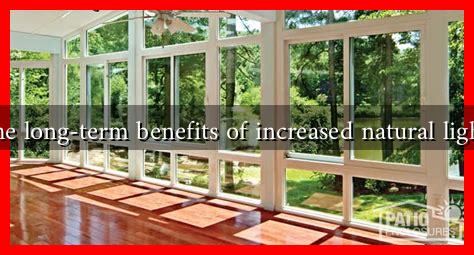-
Table of Contents
What are the Long-Term Benefits of Increased Natural Light in Homes
Natural light is often heralded as one of the most desirable features in a home. Beyond its aesthetic appeal, increased natural light can have profound long-term benefits for both physical and mental well-being. This article explores the various advantages of incorporating more natural light into residential spaces, supported by research, statistics, and real-world examples.
The Psychological Benefits of Natural Light
Exposure to natural light has been linked to improved mental health and well-being. Here are some key psychological benefits:
- Enhanced Mood: Natural light increases serotonin levels, which can help alleviate feelings of depression and anxiety. A study published in the journal Environmental Health Perspectives found that individuals who spent more time in naturally lit environments reported higher levels of happiness.
- Improved Sleep Quality: Natural light helps regulate the body’s circadian rhythms, leading to better sleep patterns. A well-lit home can promote a healthier sleep cycle, which is crucial for overall health.
- Increased Productivity: Studies have shown that employees working in environments with ample natural light are more productive. A report from the Harvard Business School indicated that natural light can boost productivity by up to 15%.
Physical Health Advantages
Natural light is not just beneficial for mental health; it also plays a significant role in physical well-being:
- Vitamin D Production: Exposure to sunlight is essential for the body to produce vitamin D, which is crucial for bone health and immune function. A deficiency in vitamin D can lead to various health issues, including osteoporosis and weakened immunity.
- Reduced Eye Strain: Natural light can help reduce eye strain associated with artificial lighting. A study from the American Optometric Association found that working in natural light can decrease the risk of developing vision problems.
- Lower Blood Pressure: Research has shown that exposure to natural light can help lower blood pressure, contributing to overall cardiovascular health.
Energy Efficiency and Economic Benefits
Incorporating natural light into home design can also lead to significant economic advantages:
- Reduced Energy Costs: Homes that maximize natural light can reduce reliance on artificial lighting, leading to lower electricity bills. According to the U.S. Department of Energy, using natural light can cut energy costs by up to 30%.
- Increased Property Value: Homes with abundant natural light are often more attractive to buyers, which can increase property value. A study by the National Association of Industrial and Office Properties found that properties with good natural light command higher prices.
- Long-Term Sustainability: Utilizing natural light reduces the need for artificial lighting, contributing to a more sustainable lifestyle. This aligns with global efforts to reduce carbon footprints and promote eco-friendly living.
Designing for Natural Light
To reap the benefits of natural light, homeowners can consider various design strategies:
- Large Windows: Installing larger windows or glass doors can significantly increase the amount of natural light entering a home.
- Skylights: Adding skylights can bring light into areas that may not have direct access to windows.
- Open Floor Plans: Designing open spaces can help distribute natural light more effectively throughout the home.
Conclusion
Increased natural light in homes offers a multitude of long-term benefits, ranging from enhanced mental and physical health to economic advantages and sustainability. By prioritizing natural light in home design, homeowners can create healthier, more productive living environments that not only improve quality of life but also contribute to long-term savings and property value. As we continue to understand the importance of our living spaces, embracing natural light becomes not just a design choice but a lifestyle enhancement.


